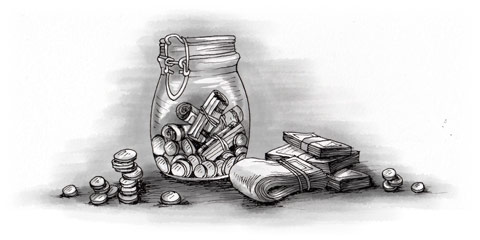But the general lack of taxation has a significant impact on the cost of certain items, e.g. cars. On the other hand, the cost of accommodation is sometimes high, as is that of certain food items, particularly imported foods. If you buy internationally recognised branded foods and household goods, you might pay higher prices than in your home country, but there are usually plenty of cheaper locally and regionally produced alternatives that are of excellent quality. Clothing can also be expensive if you favour designer labels – this isn’t peculiar to Oman – although there’s little need for winter clothing.
The price of wines and spirits, where these are permitted, is slightly lower than in the UK but higher than average European prices. Electronic goods, such as televisions, hi-fis, DVD players, photographic equipment and computer hardware and software, are generally less expensive than in Europe, mainly because of lower import duties.
Utilities, such as electricity, water and gas, are subsidised to some extent by the region’s governments, which own the services (except for bottled gas supplies) in order to provide inexpensive electricity and water, mainly for the benefit of the local population. Utilities are therefore cheaper than in most European countries. However, at the height of summer, air-conditioning costs will escalate, rather as the cost of heating increases in winter in colder climates. Newcomers sometimes make the expensive mistake of keeping their air-conditioning on even when they’re out, but this is unnecessary, as air-conditioning systems reduce the temperature in your accommodation quickly when activated on your return home.
You should also allow for the cost of international telephone calls, although these are kept low by Oman’s government, who wants to encourage international business and investment in the region.
Your cost of living will obviously depend on your lifestyle. When you’re negotiating a work contract, it’s usual for your prospective employer to produce detailed cost of living figures for his country, which are useful in helping you to decide whether the proposed job is financially attractive or not. Average monthly major expenses for a single person, couple and family with two children are shown below (numbers in brackets relate to the notes following the table).
| Monthly Costs ($/£) |
|||
| Item | Single | Couple | Couple with 2 Children |
| Housing (1) | 1100/700 | 1,300/850 | 1,550/1000 |
| Food (2) | 450/300 | 750/500 | 1,050/700 |
| Utilities (3) | 225/150 | 300/200 | 450/300 |
| Leisure (4) | 450/300 | 450/300 | 600/400 |
| Transport (5) | 75/50 | 150/100 | 150/100 |
| Insurance (6) | 100/65 | 150/100 | 225/150 |
| Clothing (7) | 150/100 | 300/200 | 450/300 |
| Totals | 2,550/1,665 | 3,400/2,250 | 4,475/2,950 |
- Rental costs for a one-bedroom apartment in a modern block, probably unfurnished, a two-bedroom apartment in a similar block and a two or three-bedroom apartment or a modest villa. Apartments might have air-conditioning included in the rent. Satellite television is probably provided but is unlikely to include all channels. A swimming pool and/or gym are usually provided.
- Doesn’t include luxury food items or alcohol.
- Includes electricity (and air-conditioning), water (and usually sewage if charged in conjunction with the water, as is normal) and an allowance for telephone charges.
- Includes entertainment, dining out, sports, newspapers and magazines but not holidays (air fares are often included in work contract terms).
- Includes running costs for an average family car plus third party insurance, petrol, servicing and repairs, but excludes depreciation and credit purchase costs.
- Includes private health, travel, car and contents insurance. Note that property is rented, so building insurance is usually unnecessary.
- Lots of clothing is unnecessary in the region’s hot climate. Office wear for men is a shirt and tie, except for formal occasions.

